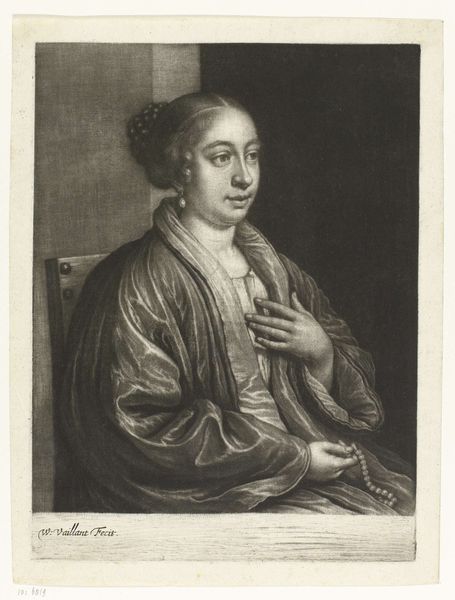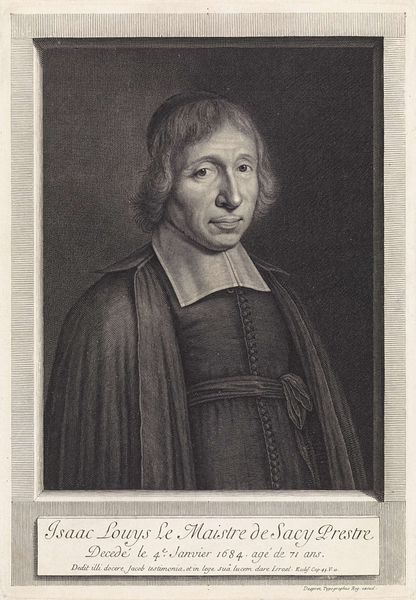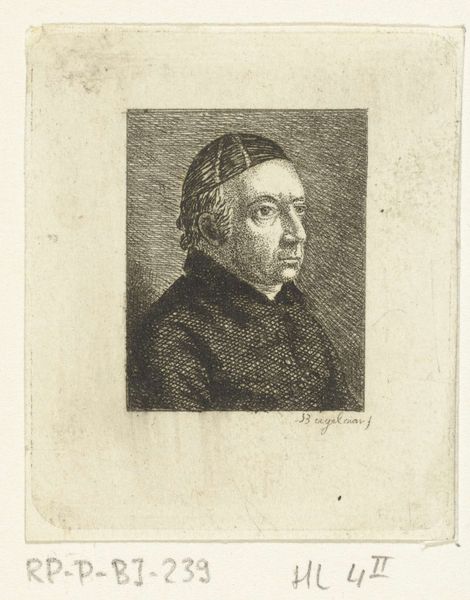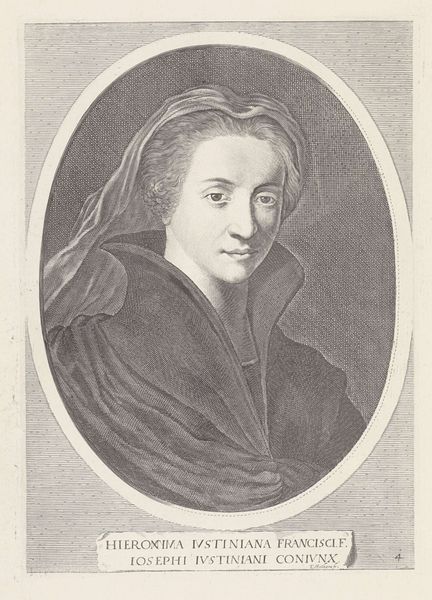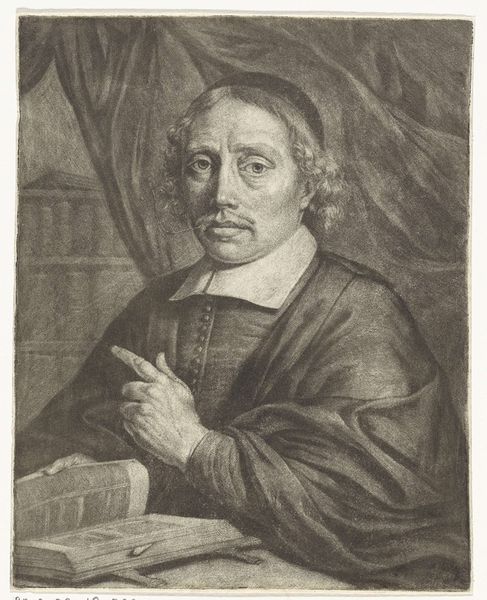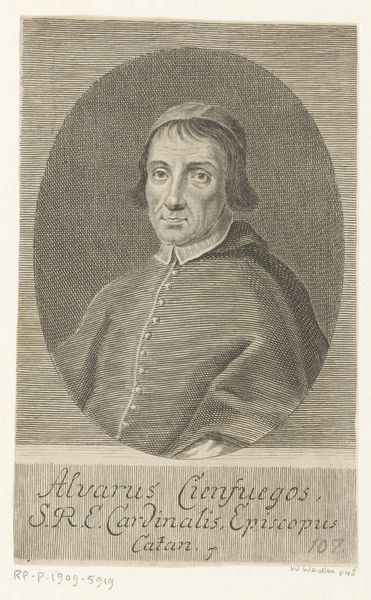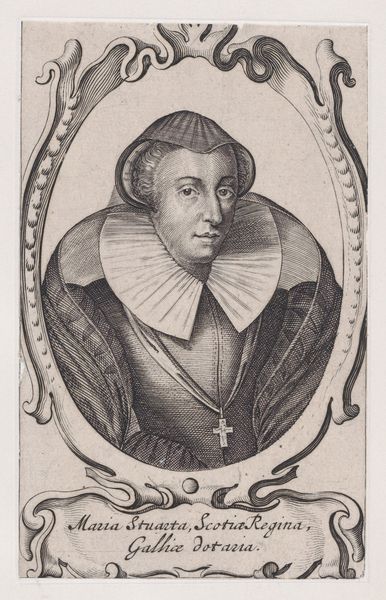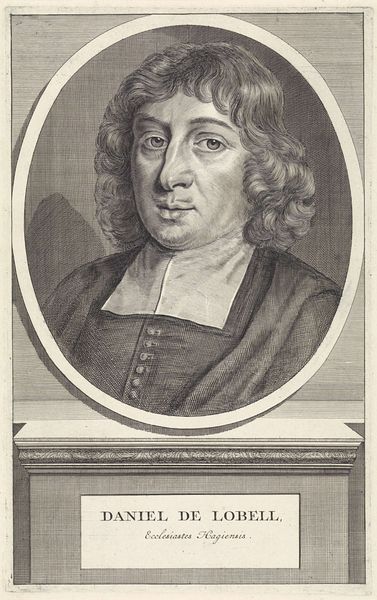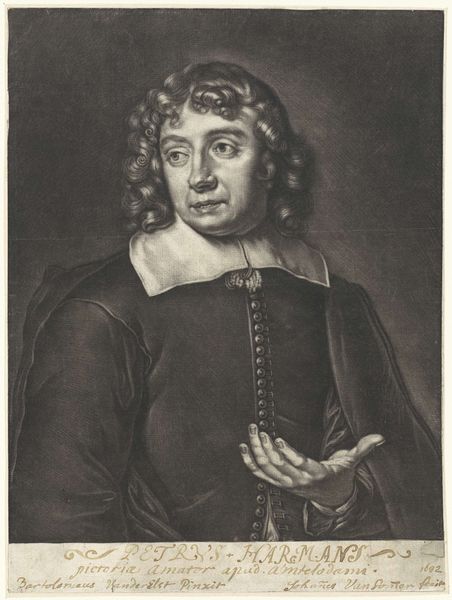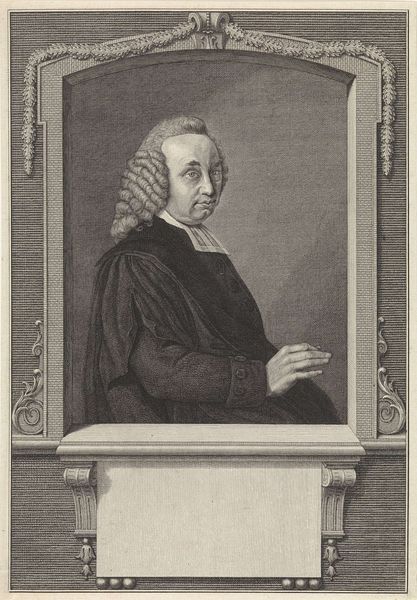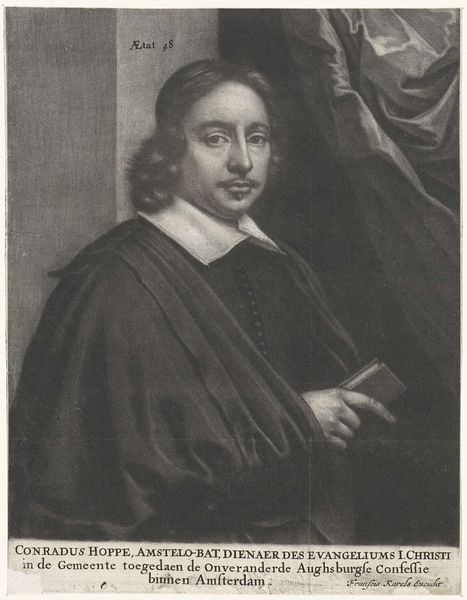
Portret van een vrouw met een parelketting in de hand 1658 - 1706
0:00
0:00
wallerantvaillant
Rijksmuseum
print, engraving
#
portrait
#
baroque
#
dutch-golden-age
# print
#
portrait drawing
#
engraving
Dimensions: height 261 mm, width 193 mm
Copyright: Rijks Museum: Open Domain
Editor: This is "Portrait of a Woman with a Pearl Necklace in her Hand" by Wallerant Vaillant, dating sometime between 1658 and 1706. It's an engraving, currently housed at the Rijksmuseum. It's compelling, the way she looks off into the distance with a melancholic gaze, especially given the context of portraiture in the Dutch Golden Age. What does this image evoke for you, considering the society in which it was made? Curator: That's a very astute observation! Considering the engraving process – a readily reproducible medium – tells us much about its potential viewership and social function. While painted portraits were often reserved for the elite, prints allowed for wider dissemination of images, shaping public perception and even constructing a shared sense of identity. Think about how portraits were used politically or as markers of status during this period. Does her clothing or the pearl necklace hint at her social standing, and what does it tell us that it is a print rather than a painting? Editor: It seems almost like she’s democratizing access to her image through print, moving beyond simply signaling status but participating in the social discourse more actively. Would you say the pearl necklace challenges the notion of portraying just high society? Curator: Perhaps, although it also subtly reinforces a certain level of affluence. But your point about democratizing the image is well-taken. The proliferation of such prints during the Dutch Golden Age indicates a shifting dynamic – a burgeoning middle class keen on engaging with and perhaps even emulating the fashions and poses of the elite. Consider, though, who would have had access even to *purchase* such a print? Was it truly accessible to all? Editor: So, even in its wider distribution, power dynamics and access were still at play. Thank you, I hadn't considered that nuanced reach before. Curator: Exactly. Examining art through the lens of its historical context and the means of its production always reveals deeper layers of meaning. A fruitful discussion!
Comments
No comments
Be the first to comment and join the conversation on the ultimate creative platform.
